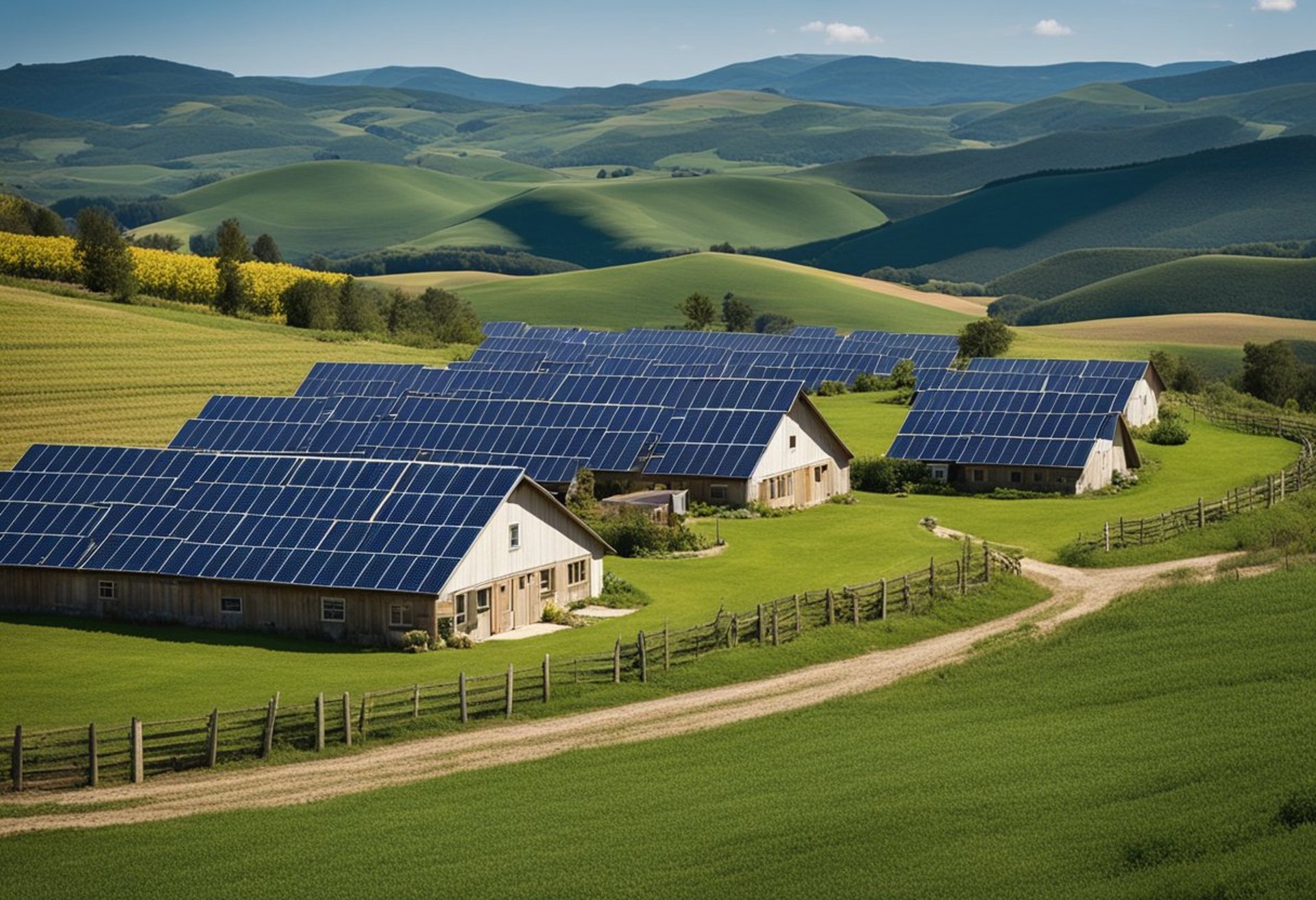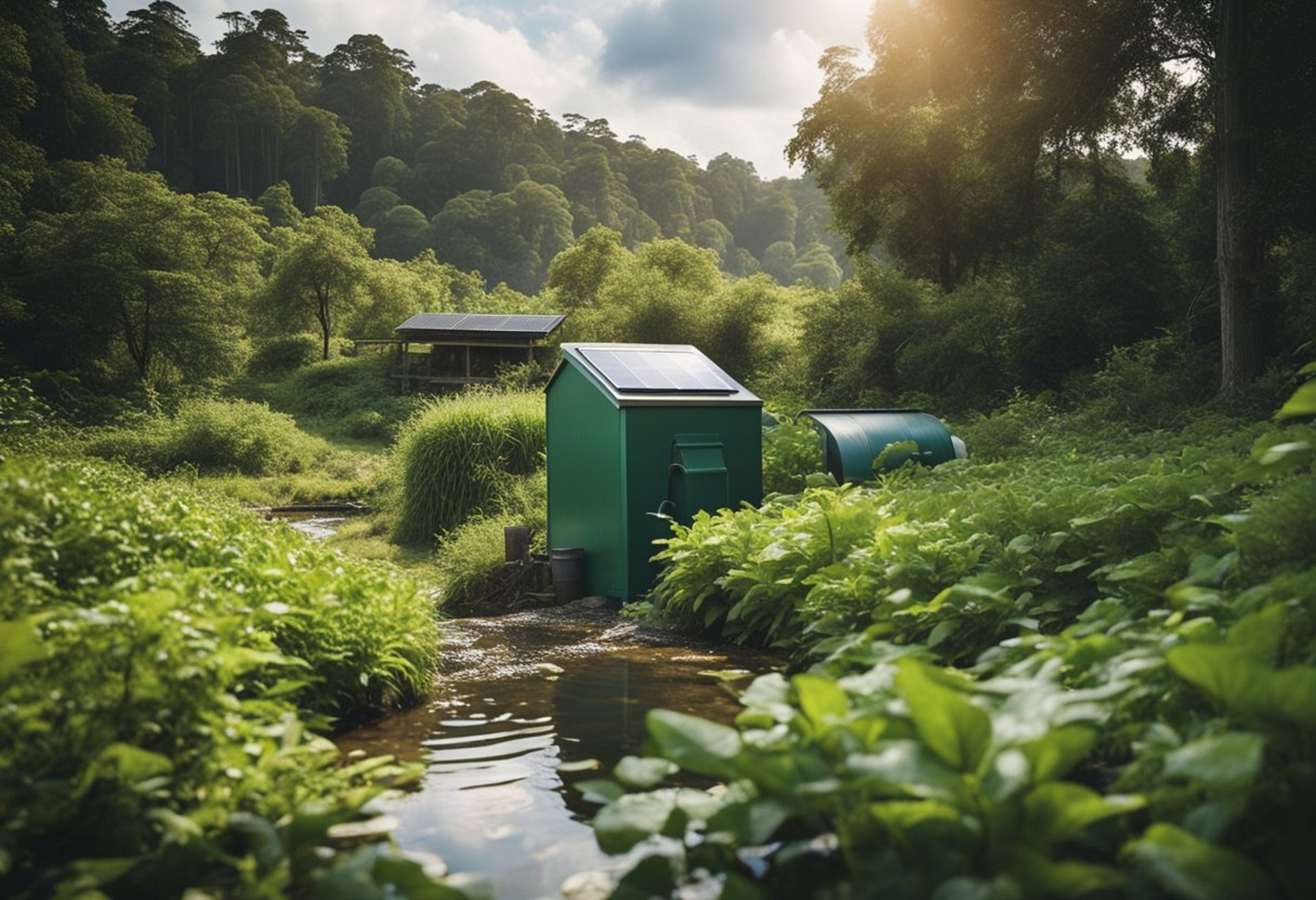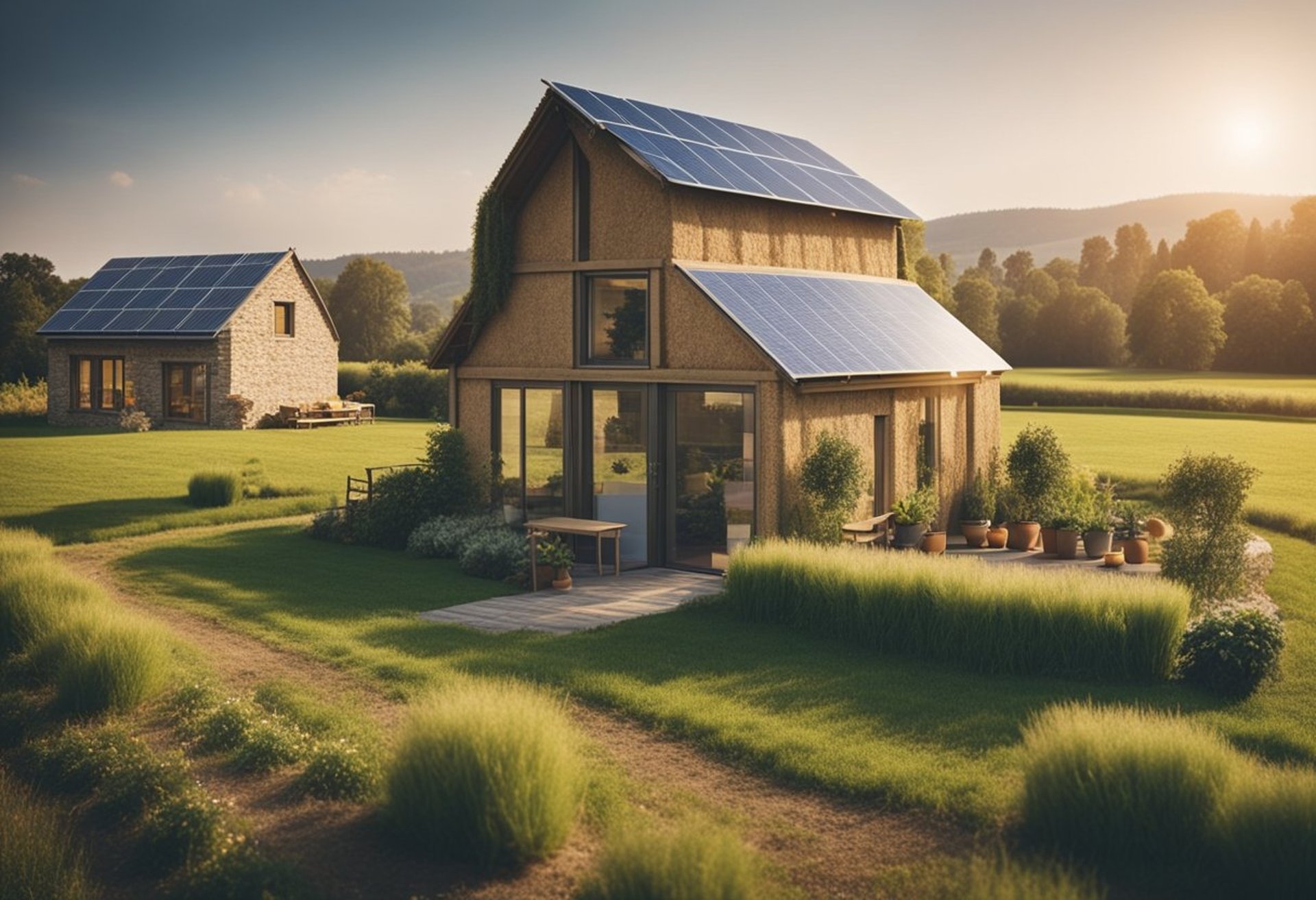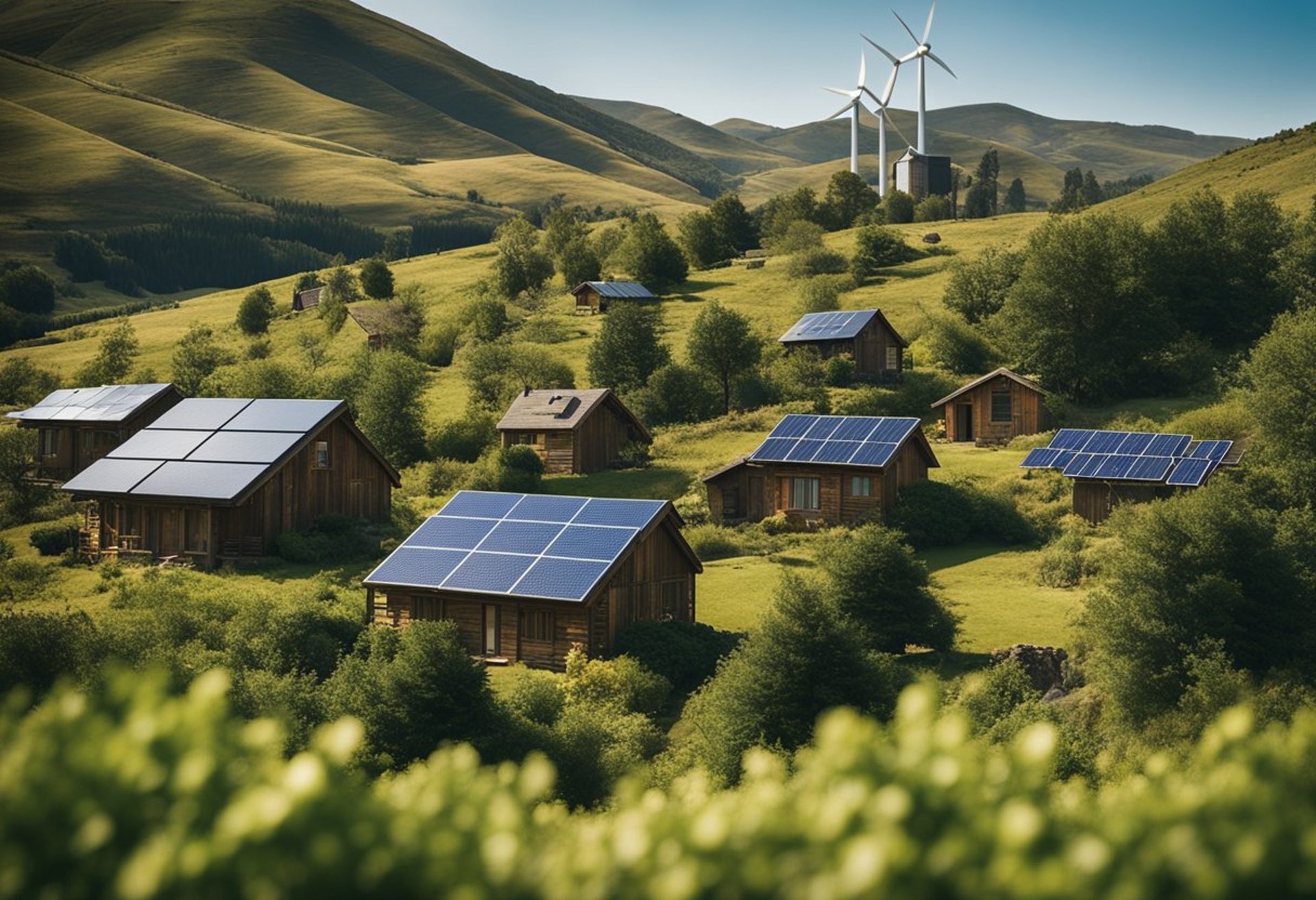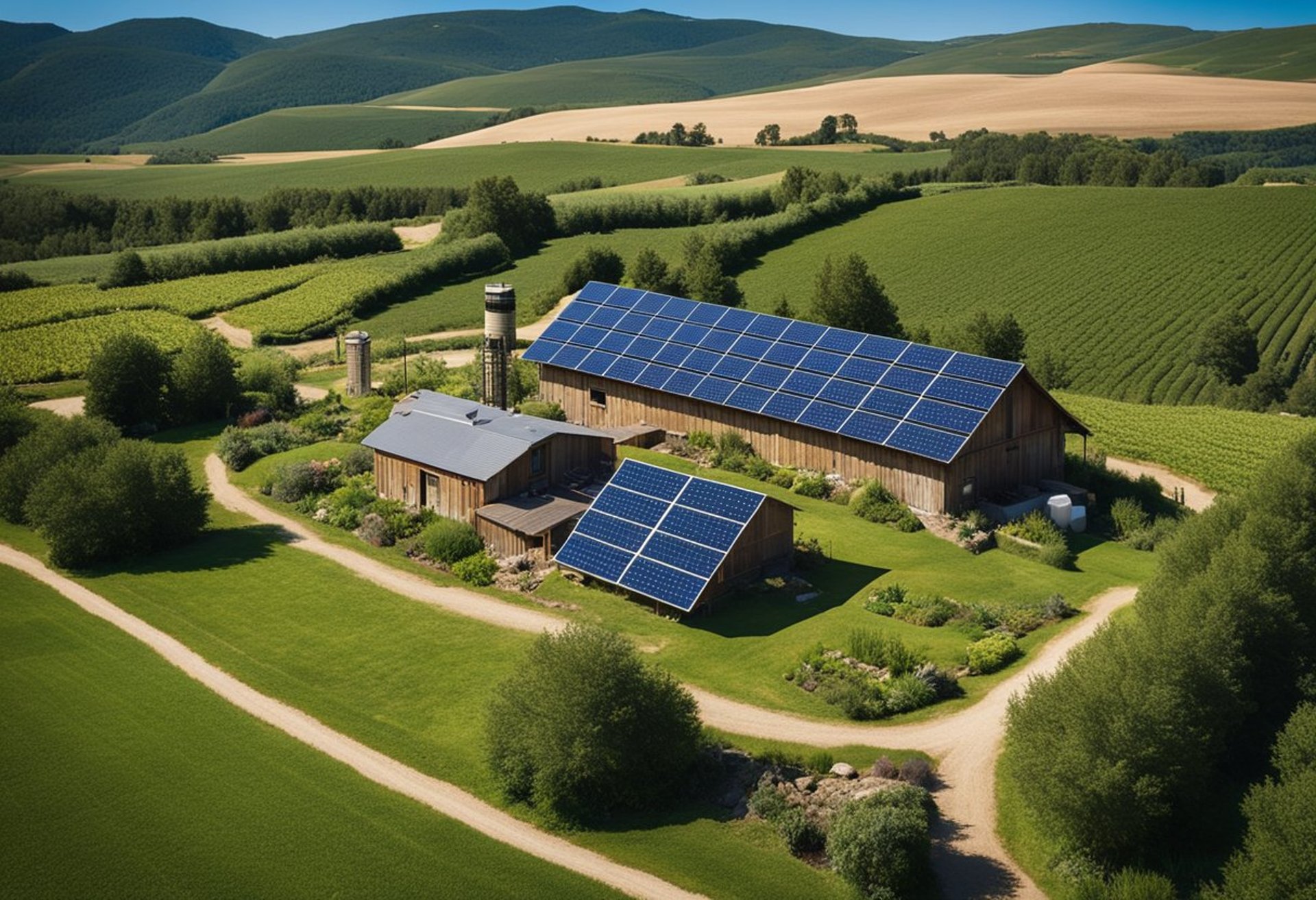Off the Grid Farm: A Sustainable Approach to Self-Sufficient Living
Off the grid farming presents a unique way of life that prioritizes self-sustainability and independence. By embracing this lifestyle, individuals can harness natural resources, grow their own food, and reduce reliance on modern utilities. This approach allows for a deeper connection with nature and an opportunity to live more harmoniously with the environment.
Off the Grid Farm: A Sustainable Approach to Self-Sufficient Living
Off the grid farming presents a unique way of life that prioritizes self-sustainability and independence. By embracing this lifestyle, individuals can harness natural resources, grow their own food, and reduce reliance on modern utilities. This approach allows for a deeper connection with nature and an opportunity to live more harmoniously with the environment.
Creating an off-the-grid farm requires careful planning and consideration of various factors, from architectural designs to energy solutions. Those interested in this lifestyle will find that understanding the necessary infrastructure, sustainable practices, and efficient systems is crucial to success. This journey can lead to rewarding experiences that transform how one views modern living.
Key Takeaways
Off-the-grid farms promote self-sufficiency through natural resource use.
Effective planning and sustainable practices are essential for success.
Living off the grid fosters a closer connection with the environment.
Understanding Off-The-Grid Living
Off-the-grid living involves self-sufficiency and independence from public utilities. Individuals engaging in this lifestyle prioritize sustainable practices and minimal environmental impact while navigating various legal frameworks.
Defining Off-The-Grid
Off-the-grid living refers to a lifestyle that operates independently from centralized power and water sources. People who choose this path often rely on renewable energy sources such as solar panels or wind turbines. Water is typically sourced from wells or rainwater harvesting systems. The goal is to create a self-sustaining environment where individuals can meet their basic needs without reliance on external services.
Keys to this lifestyle include minimalism and resourcefulness. Many off-the-grid farmers grow their food using organic practices. They implement techniques like permaculture and crop rotation to enhance soil health. Living off the grid requires an understanding of local ecosystems and sustainable practices to ensure long-term viability.
Benefits of Living Off-The-Grid
The advantages of off-the-grid living are significant. It fosters a greater connection to nature, as individuals often cultivate their lands, engaging directly with their environment. This lifestyle can lead to reduced living costs, as reliance on public utilities decreases monthly expenses.
Additionally, many off-the-grid enthusiasts cite increased personal freedom. They face fewer restrictions from government regulations regarding utilities. Environmental benefits also emerge; this lifestyle tends to result in a lower carbon footprint, promoting biodiversity and conservation efforts.
Gaining resilience strengthens communities. Skills shared among neighbors, such as food preservation and alternative energy systems, contribute to a comprehensive support network.
Legal and Environmental Considerations
Living off-the-grid necessitates careful consideration of local laws and environmental regulations. Zoning laws may restrict certain activities, such as building or using alternative energy sources. Individuals must research and comply with these laws to avoid fines or legal issues.
Environmental considerations, such as water usage and land management, are also crucial. Many regions require permits for well drilling or water collection systems. Waste management practices need to be environmentally friendly to prevent soil and water contamination.
Furthermore, understanding local wildlife impacts is essential. Sustainable farming practices must consider the ecosystem's balance to avoid harming local habitats. By approaching off-the-grid living responsibly, individuals can mitigate risks and ensure their operations are sustainable.
Planning Your Off-The-Grid Farmhouse
Effective planning is crucial when establishing an off-the-grid farmhouse. This involves selecting the right location, designing for efficiency and sustainability, and managing essential resources effectively.
Choosing the Right Location
The site selection for an off-the-grid farmhouse requires careful consideration. Proximity to natural resources such as water, sunlight, and fertile soil is vital.
Key factors to evaluate include:
Climate: Assess average temperatures, precipitation patterns, and seasonal shifts.
Access: Ensure there are reliable roads for emergency situations and transportation.
Zoning Regulations: Check local laws regarding land use and building codes.
Selecting a location with a natural water source can significantly reduce reliance on additional systems.
Designing for Efficiency and Sustainability
The farmhouse design must prioritize both efficiency and sustainability. Incorporating passive solar techniques can optimize heating and lighting, reducing energy consumption.
Important design elements include:
Orientation: Position the house to maximize sunlight exposure throughout the year.
Materials: Use sustainable building materials that have a low environmental impact.
Layout: Create an open floor plan to ensure air circulation and natural light.
Designing with these principles enhances comfort while minimizing ecological footprints.
Resource Management: Water, Waste, and Energy
Proper resource management is essential for an off-the-grid lifestyle. This includes establishing systems for water collection, waste disposal, and energy generation.
Key systems to implement:
Water: Install rainwater harvesting systems and consider filtration options to ensure safe drinking water.
Waste: Adopt composting toilets and greywater recycling to minimize waste impact.
Energy: Use solar panels or wind turbines for renewable energy, supplemented by efficient battery storage.
Each system should be tailored to the farmhouse's specific location and needs, ensuring long-term sustainability.
Architectural Concepts for Off-The-Grid Cabins
Off-the-grid cabins prioritize sustainability, functionality, and harmony with nature. They incorporate innovative designs and durable materials to withstand various environmental conditions.
Innovative Off-The-Grid Cabin Ideas
Creative designs for off-the-grid cabins often focus on maximizing energy efficiency and minimizing environmental impact. This can include using solar panels for power, rainwater harvesting systems for water needs, and natural insulation materials like straw bales or wool.
Incorporating green roofs can further enhance energy efficiency, providing insulation and managing stormwater runoff. The tiny house movement has also popularized smaller cabin designs, allowing for easier construction and maintenance.
Architects may use modular designs that enable easy assembly and disassembly, which is particularly beneficial in remote locations. This flexibility allows occupants to adapt their living spaces over time based on needs and environmental conditions.
Exterior Design and Durability
The exterior of an off-the-grid cabin must withstand weather variations while blending into the surrounding landscape. Common materials include wood, stone, and metal, chosen for both aesthetic appeal and resilience.
Wood siding, particularly from locally sourced species, can offer insulation while enhancing the rustic charm. Metal roofing is another popular choice, known for its longevity and resistance to extreme weather.
Incorporating large windows not only allows for natural light but also connects the interior with nature. Decks and porches can extend living spaces outdoors, promoting an active lifestyle.
Combining these elements can create a robust, attractive cabin that serves as a sanctuary away from urban life while remaining functional and sustainable.
Interior Design and Functionality
Designing an off-the-grid farm requires a careful balance of aesthetics and practicality. Essential areas, such as the kitchen and bathroom, should be tailored for efficiency while retaining comfort.
Layout and Space Utilization
Maximizing space is crucial in an off-the-grid cabin. Open floor plans enhance movement and light, creating a sense of spaciousness.
Considerations for layout include:
Multipurpose Furniture: Use furniture that serves more than one function, such as a dining table that doubles as workspace.
Storage Solutions: Incorporate built-in shelves and cabinets to keep tools and supplies organized and accessible.
Natural Light: Position windows strategically to allow sunlight to illuminate living spaces, reducing energy needs.
Effective space utilization creates a functional environment essential for off-the-grid living.
Kitchen Essentials for Off-The-Grid Cabins
An efficient kitchen is the heart of any off-the-grid cabin. It should be equipped with necessities that promote self-sufficiency while being mindful of resource conservation.
Key components include:
Efficient Cooking Appliances: Opt for energy-efficient propane or solar stoves.
Water Filtration Systems: Install gravity-fed or solar-powered filters to ensure clean water supply.
Compact Refrigeration Options: Consider using icebox-style coolers or propane fridges that consume less power.
Arranging kitchen essentials logically can streamline cooking and food preservation while minimizing waste.
Bathroom Solutions for Off-The-Grid Living
Off-the-grid bathrooms should prioritize water conservation and waste management. Choosing sustainable materials contributes to an eco-friendly lifestyle.
Features to consider:
Composting Toilets: These reduce water usage and promote organic waste recycling.
Rainwater Harvesting Systems: Collecting rainwater can provide a reliable water source for bathing and washing.
Solar Water Heaters: These systems utilize solar energy, reducing reliance on conventional heating.
Organizing bathroom spaces for practicality ensures a comfortable and resource-efficient living experience.
Building Techniques and Materials
Constructing an off-the-grid farm requires thoughtful selection of materials and methods that prioritize sustainability and self-sufficiency. This section explores essential building materials and effective construction techniques suited for autonomous living.
Sustainable Building Materials
Selecting sustainable materials is crucial for an off-the-grid farm. Options include:
Reclaimed Wood: Utilized from old buildings, it reduces waste and environmental impact.
Straw Bales: Highly insulative, straw bales are used for walls and provide natural heating and cooling.
Natural Stone: Durable and locally sourced, stone can be used for foundations and walls.
Bamboo: A rapidly renewable resource, bamboo is strong and versatile for various structures.
Choosing materials like these helps minimize reliance on commercial products and supports eco-friendly building practices.
Construction Methods for Self-Sufficiency
Construction methods must enhance self-sufficiency and resilience. Key techniques include:
Earthbag Construction: Involves filling bags with soil, creating sturdy walls that insulate well.
Passive Solar Design: Orienting the building to maximize sunlight reduces energy consumption.
Tiny House Design: Smaller structures require fewer materials and less energy to build and maintain.
Off-Grid Utilities: Incorporating solar panels and rainwater collection systems creates self-sustaining infrastructure.
These methods not only foster independence but also align with off-the-grid philosophies, ensuring that the structures remain functional and efficient.
Energy Solutions for Off-The-Grid Farms
Off-the-grid farms depend on sustainable energy solutions to operate independently. Key options include harnessing solar power and exploring alternatives like wind and water energy.
Solar Power Systems
Solar power systems are a popular choice for off-the-grid farms. They consist of solar panels, a charge controller, batteries, and an inverter.
Solar Panels: These convert sunlight into electricity. The required number of panels varies based on energy needs and location.
Batteries: Store excess energy generated during peak sunlight hours. Choosing the right battery type, such as lithium-ion or lead-acid, affects longevity and cost.
Inverter: Converts DC electricity from batteries to AC electricity for appliances.
Solar power systems should be sized effectively to meet the energy demands of the farm. Careful monitoring and maintenance ensure system efficiency and longevity.
Wind and Water Energy Alternatives
Wind and water energy solutions are viable options for enhancing energy independence. Each method has unique considerations and benefits.
Wind Energy: Wind turbines convert kinetic energy from wind into electricity. They require sufficient wind speed and careful placement for maximum efficiency. Typically, a small turbine may generate enough power for common farm needs.
Water Energy: Micro-hydro systems utilize flowing water to generate electricity. These systems are effective for farms near rivers or streams. They can provide a consistent energy supply, but installation costs and permits are critical factors.
Choosing between these alternatives depends on geographic conditions, energy needs, and available resources. Combining multiple energy sources can increase reliability and efficiency.
Water Systems and Sanitation
Water systems and sanitation are critical components of an off-the-grid farm. Effective management ensures a reliable water supply and environmentally friendly waste treatment.
Rainwater Collection and Storage
Rainwater collection is a sustainable method for securing water on an off-the-grid farm. The process typically involves gutter systems directing rainwater from roofs into storage tanks. These tanks can range from plastic barrels to more extensive cisterns based on the farm's size and water needs.
Harvested rainwater is vital for irrigation and household use. It is essential to ensure that the collection system is clean to prevent contamination. Regular maintenance, including cleaning gutters and checking tank integrity, is necessary. Filtration systems can also be added to enhance water quality.
Storage capacity is crucial, as it should accommodate seasonal rainfall variations. A well-designed system may provide a more significant input for the dry months, allowing for uninterrupted farm operations.
Natural Waste Treatment Options
Natural waste treatment systems are essential for maintaining sanitation on an off-the-grid farm. Two common methods include composting toilets and constructed wetlands.
Composting toilets effectively reduce human waste while producing valuable compost. They typically use aerobic breakdown processes to convert waste into nutrient-rich soil. Regular maintenance, such as adding carbon-rich materials like sawdust, enhances compost quality.
Constructed wetlands utilize natural processes to treat wastewater. These systems involve a series of gravel beds and plants that naturally filter contaminants. The plants absorb nutrients, while microorganisms break down organic matter, resulting in clean water that can safely return to the environment.
Both methods require careful planning and management to ensure effectiveness and compliance with local regulations. Regular monitoring and assessment are essential to maintain system efficiency and prevent public health risks.
Maintenance and Upkeep
Proper maintenance and upkeep are essential for the sustainability of an off-the-grid farm. Regular attention ensures equipment efficiency and resilience against environmental factors.
Routine Maintenance for Longevity
Routine maintenance tasks can significantly extend the lifespan of farm equipment and infrastructure. It includes:
Inspecting tools and machinery for wear and tear.
Lubricating moving parts to prevent rust and malfunction.
Cleaning solar panels, wind turbines, and water catchment systems to optimize their performance.
Maintaining fencing and shelters protects livestock from predators and weather. Routine checks for leaks in irrigation systems are vital; a small leak can waste significant resources. Keeping records of maintenance activities helps identify patterns and plan replacements.
Dealing with Weather and Natural Challenges
Weather can impact an off-the-grid farm in numerous ways. Building structures that withstand high winds, heavy snowfall, or floods is essential.
Crop selection should be suited to the local climate to ensure resilience.
Erosion control measures, such as planting cover crops, help maintain soil integrity.
Regularly assessing drainage systems will prevent water accumulation that can damage crops. Biodiversity can bolster resilience against pests and diseases. In times of extreme weather, having a contingency plan is critical to protect livestock and crops from unexpected events.
Living the Off-The-Grid Lifestyle
Living off the grid involves significant lifestyle changes that impact daily routines, social interactions, and overall self-sufficiency. Individuals embracing this lifestyle often adapt to new challenges and foster connections with their communities.
Daily Life and Adaptation
Daily life in an off-the-grid environment centers around sustainable practices. Many individuals grow their own food, often incorporating permaculture techniques to maintain a productive garden throughout the seasons.
Water sources may come from wells, rainwater collection, or nearby streams. These require careful management and purification. Cooking often relies on solar ovens or wood stoves, emphasizing efficiency.
Electricity may be generated through solar panels or wind turbines, necessitating an understanding of energy consumption. Regular maintenance of equipment is critical to ensure a dependable supply.
This lifestyle promotes skills like woodworking, animal husbandry, and foraging, encouraging complete reliance on one’s resourcefulness and adaptability.
Community and Social Aspects
Community plays a vital role in off-the-grid living. Many individuals find themselves forging strong connections with neighbors and fellow homesteaders. Sharing resources and skills creates an environment of support.
Workshops on various topics, such as canning, herbal medicine, and energy efficiency, often take place. These gatherings foster knowledge exchange, empowering a deeper understanding of self-sufficiency.
Local markets frequently feature goods created by residents, allowing for an exchange of products while strengthening community ties. Networking with like-minded individuals supports the emotional aspect of this lifestyle.
Collaboration is common during larger projects, from barn-raising to community gardens. Working together not only accomplishes tasks but also builds lasting friendships formed through shared goals and values.


